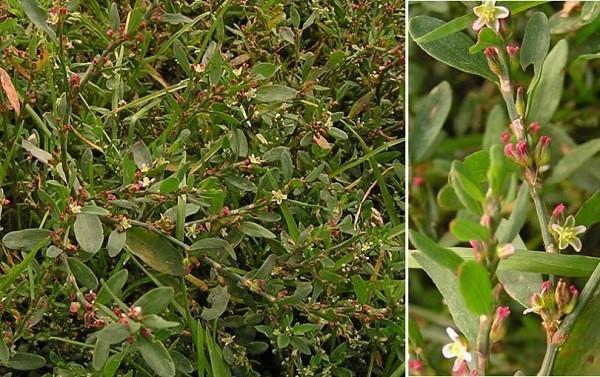The inconspicuous and useful bird Knotweed belongs to medicinal plants
 Often we walk on the grass, completely oblivious to what is growing under our feet. But there can be a remedy for many diseases, for example, bird highlander. This medicinal plant is often found in villages, where it grows near the house or right in the yard, creating a soft green carpet. Let's talk briefly about what is the uniqueness of seemingly inconspicuous herb and how it is used in folk medicine.
Often we walk on the grass, completely oblivious to what is growing under our feet. But there can be a remedy for many diseases, for example, bird highlander. This medicinal plant is often found in villages, where it grows near the house or right in the yard, creating a soft green carpet. Let's talk briefly about what is the uniqueness of seemingly inconspicuous herb and how it is used in folk medicine.
Description of the plant
The scientific name of the herb is "avikularis", which means "bird". This is quite consistent with the nature of the plant: despite the fact that the seeds and inflorescences of the mountaineer are pecked with pleasure by birds, it stubbornly continues to grow, forming more and more new spores (hence the second name - knotweed).
The people call the mountaineer a trample-grass, because he is able to climb even after a car has passed through the bushes.
Knotweed is a prominent representative of perennials from the buckwheat family. It has long and strong shoots, creeping along the ground, on which are located small green lanceolate leaves. In young bushes, they are vertical, with age, the branches fall. The flowering of the mountaineer is long and occurs simultaneously with the setting of seeds: while pink-white corollas bloom on some branches, brown nuts are already ripening on others.
Trample grass stays green longer than other plants, right up to the very frosts.
Useful properties of the highlander bird
Due to the presence of tannins, essential oils and flavonoids in its composition, this medicinal plant is widely used in folk medicine for:
- increasing immunity;
- prevention of the formation of stones in the bladder;
- acceleration of urine excretion;
- strengthening the mucous membranes;
- healing wounds and stopping bleeding.
Decoctions from the green part of knotweed are recommended for use when stomach ulcer and inflammation of the digestive tract, with diseases of the liver and urinary tract, with bleeding. Crushed fresh leaves are applied to the wounds, and compresses are made from dry grass for sprains and bruises. Bird knotweed can even be used in pediatrics - a decoction added to the bath helps babies get rid of skin diseases.
In combination with other herbs, knotweed prevents heart disease. So, it is very useful to drink herbal tea with the addition of field horsetail and hawthorn flowers.